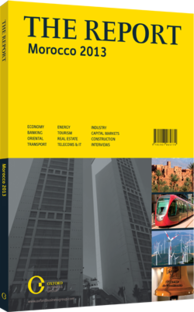A bright future: Tapping domestic potential to become a regional pioneer in solar power
tium for a €400bn project launched in 2009 to establish solar plants across North Africa, and projected to produce 125 GWh of electricity by 2050. Financial issues for solar energy mirror difficulties faced by renewable energies in general within the context of a global economic slowdown, with international investment in clean energy falling to €41.6bn in third-quarter 2012, down 20% year-on-year. Nevertheless, considering that solar energy was six times more expensive just a few years ago, optimism remains for Morocco’s programme.
INTERNATIONAL AID FUNDING: Indeed, despite its technological drawbacks, solar projects continue to attract funding from a large number of international bodies. In 2012 the African Development Bank approved a €588.5m loan to develop renewable energy in Morocco, pledging €168m of its own resources and a concessionary loan of €73.6m from the Clean Technology Fund devoted solely to the first phase of the Ouarza-zate solar plant. The €1.04bn project will be jointly funded by other major organisations as well, including the European Investment Bank, the World Bank, the German Development Bank, the European Commission’s Neighbourhood Investment Facility, and the French Development Agency, along with local institutions.
REMAINING CHALLENGES: The country’s renewable energies law has yet to increase access to the low- and medium-voltage grids, complicating the application of renewable energy sources, notably photovoltaic installations. Additionally, the absence of an independent regulator in the electricity segment continues to impede private ambitions. While plans exist to introduce an independent regulator and liberalise the medium-voltage grid, discussion of a liberalised low-voltage grid stirs fears concerning the effect such a measure would have on the position of National Office of Electricity and Water Supply, the main national electricity provider. Proponents of liberalisation argue that such moves are needed, given an expected doubling of electricity demand in the next 10 years, potential reduction in fuel consumption, and the provision of cheaper energy. The €6.62bn Solar Power Plan is an ambitious venture to build five solar plants across the country between 2015 and 2019. The combined capacity of 2000 MW, beginning with the construction of a 500-MW plant at Ouarzazate, is expected to reduce the country’s carbon emissions by 3.7m tonnes per year. The €736m contract for phase one of the Ouarza-zate plant was awarded to a Saudi-Spanish consortium in late 2012 and is expected to be complete by 2014. Work has already concluded on the 472-MW integrated solar combined cycle power plant at Ain Beni Math-ar, which has a solar energy capacity of 20 MW. Phase two includes plans to extend the capacity of Ain Beni Mathar and construct three additional solar plants at Boujdour, Foum Al Ouad and Sebkhat Tah. Morocco’s solar programme was inspired by a study on renewable energies in 2007-08, which concluded that its potential to produce clean electricity is over 1000 times more than domestic electricity consumption in 2010. “We know from solar radiation maps that the potential of solar energy in regions like Ouarzazate is easily 10 times the capacity that will be realised in the Ouarzazate solar plant (500 MW) until end-2015, therefore there is a tremendous opportunity to enlarge solar capacity even in this region,” said Dieter Uh, senior technical advisor with the Deutsche Gesellschaft für Internationale Zusammenarbeit (GIZ) office in Morocco. “Until projects are realised with dry cooling systems, the water consumption of solar plants with wet cooling systems is a limiting factor in desert areas; the performance is reduced by up to 5% and the investment costs are around 10% higher,” said Uh.
FINANCING & TECHNOLOGY: Unlike wind power capabilities, concentrated solar power technology remains underdeveloped and expensive without support, whereas photovoltaic technologies will come down to the price of coal-fired power plants during next years. Continued uncertainty over the profitability of solar energy led to the withdrawal of Siemens and Bosch from the Desertec industrial initiative in late 2012, the
You have reached the limit of premium articles you can view for free.
Choose from the options below to purchase print or digital editions of our Reports. You can also purchase a website subscription giving you unlimited access to all of our Reports online for 12 months.
If you have already purchased this Report or have a website subscription, please login to continue.

